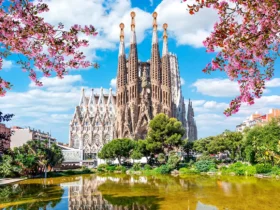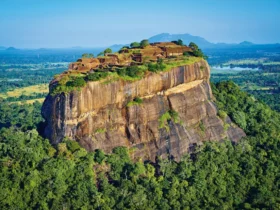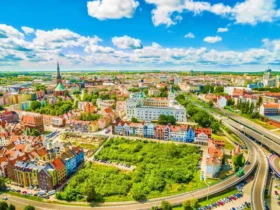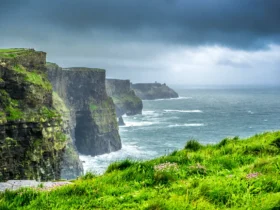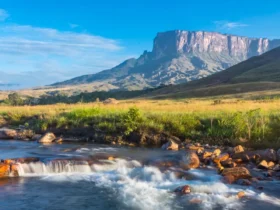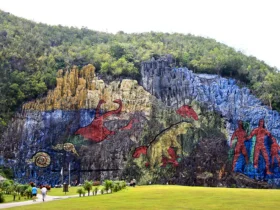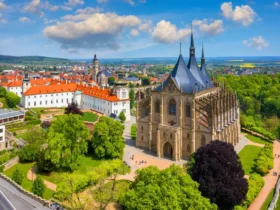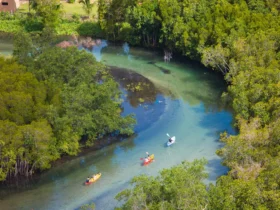The National Park System in the United States is a collection of protected areas that are managed by the National Park Service, a federal agency. The system was established with the goal of preserving and protecting significant natural, cultural, and historical sites for the enjoyment and education of the public.
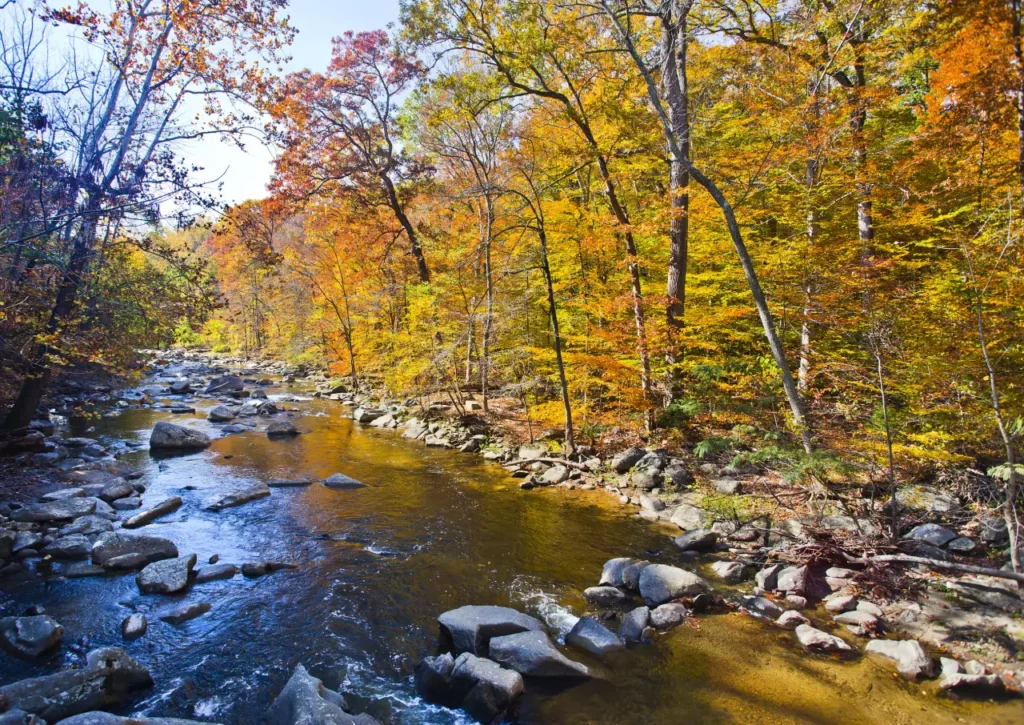
The National Park System is a cherished aspect of the United States’ natural and cultural heritage, providing opportunities for recreation, education, and conservation. It allows visitors to connect with the country’s diverse landscapes, learn about its rich history, and appreciate the importance of protecting these special places for future generations.
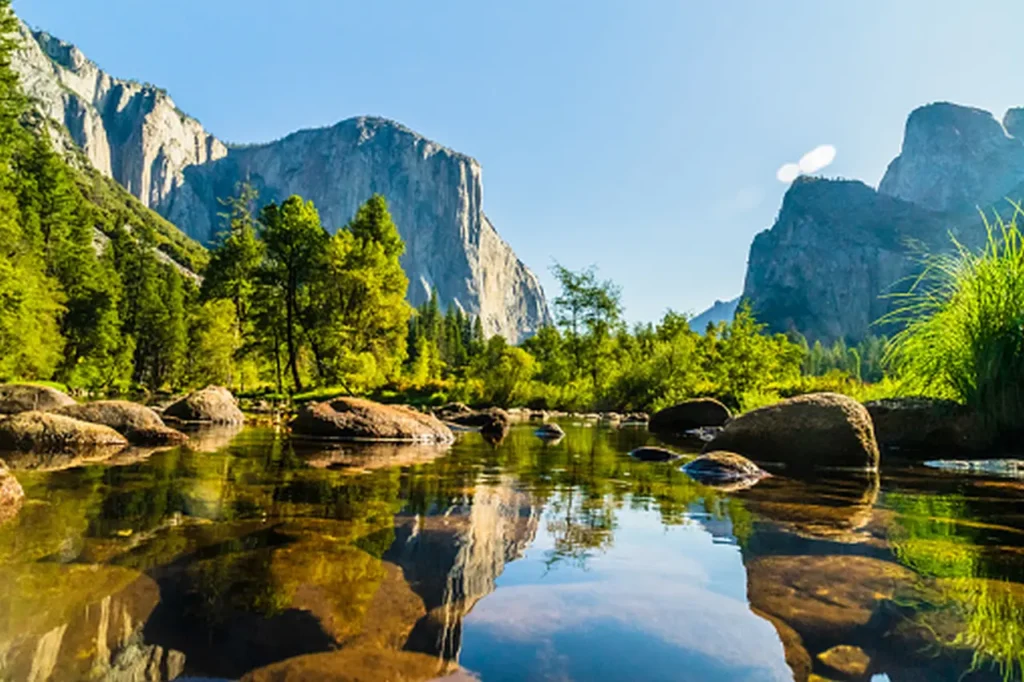
Here are some key features and facts about the National Park System:
- Purpose: The National Park System aims to preserve and protect the nation’s most important natural and cultural resources, including unique ecosystems, iconic landscapes, historic landmarks, and archaeological sites.
- Size and Diversity: The system comprises over 400 individual units, including national parks, national monuments, national historic sites, national recreation areas, and more. These units cover a wide range of environments and landscapes, from towering mountains and vast deserts to pristine coastlines and ancient forests.
- Conservation and Preservation: The National Park Service plays a crucial role in conserving the natural and cultural heritage of the United States. It employs various strategies to protect ecosystems, wildlife, and historical structures, while also promoting sustainable practices and visitor education.
- Outdoor Recreation: National parks offer abundant opportunities for outdoor activities such as hiking, camping, fishing, wildlife viewing, boating, and more. Visitors can immerse themselves in the beauty of nature and engage in recreational pursuits while enjoying the protected environments.
- Education and Interpretation: The National Park Service provides educational programs, interpretive exhibits, and guided tours to enhance visitors’ understanding and appreciation of the parks’ natural and cultural significance. Interpretive rangers offer insights into the parks’ geology, ecology, history, and cultural heritage.
- Iconic Parks: The National Park System is home to some of the most iconic and beloved national parks, including Yellowstone, Yosemite, Grand Canyon, Acadia, Zion, and Glacier National Park. These parks showcase the nation’s diverse landscapes and are renowned for their outstanding natural beauty.
- Visitor Centers and Facilities: National parks often have visitor centers that provide information, exhibits, and orientation to help visitors plan their experiences. They may also have campgrounds, picnic areas, trails, and other facilities to accommodate visitors.
- Entrance Fees and Passes: Most national parks charge an entrance fee, which helps support park operations and maintenance. However, there are annual passes, such as the America the Beautiful Pass, that provide access to multiple parks and federal recreation lands for a set fee.
- Volunteer and Stewardship Opportunities: The National Park System offers opportunities for volunteers to contribute to conservation efforts and assist with park operations. Volunteer programs allow individuals to participate in trail maintenance, wildlife monitoring, visitor services, and more.
- Economic Impact: National parks contribute to local economies by attracting visitors, creating jobs, and supporting tourism-related industries. They serve as popular destinations for travelers from around the world, benefiting nearby communities and fostering environmental stewardship.
- World Heritage Sites: Several national parks within the system have been recognized as UNESCO World Heritage Sites, highlighting their outstanding universal value. Examples include Yellowstone National Park, Everglades National Park, Olympic National Park, and Mesa Verde National Park.
- Historic Sites and Battlefields: In addition to natural wonders, the National Park System includes numerous sites of historical and cultural importance. These include places of historical significance, such as Independence Hall in Independence National Historical Park, and battlefields that commemorate significant events in American history, such as Gettysburg National Military Park and Antietam National Battlefield.
- Trails and Scenic Byways: The National Park System includes a network of scenic trails and byways that provide opportunities for outdoor recreation and scenic drives. The Appalachian Trail, Pacific Crest Trail, and Continental Divide Trail are iconic long-distance hiking trails that pass through multiple national parks. Scenic byways, such as the Blue Ridge Parkway and Going-to-the-Sun Road in Glacier National Park, offer breathtaking drives through stunning landscapes.
- Cultural Diversity: The National Park System strives to represent the cultural diversity of the United States. It includes sites that commemorate the contributions and heritage of diverse communities, such as the Rosie the Riveter/WWII Home Front National Historical Park, which honors the role of women and minorities during World War II.
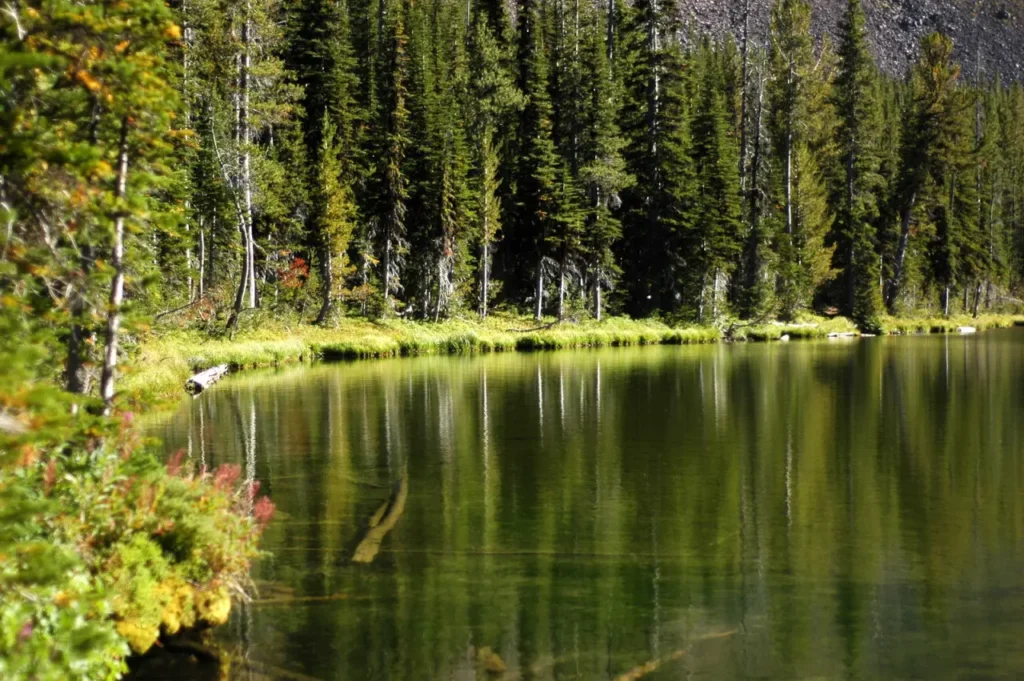
The National Park System is a dynamic and ever-evolving entity that celebrates the country’s natural wonders, preserves its history, and provides opportunities for recreation, education, and research. Whether you are interested in exploring nature, immersing yourself in history, or simply enjoying the outdoors, the national parks offer a vast array of experiences to discover and enjoy.
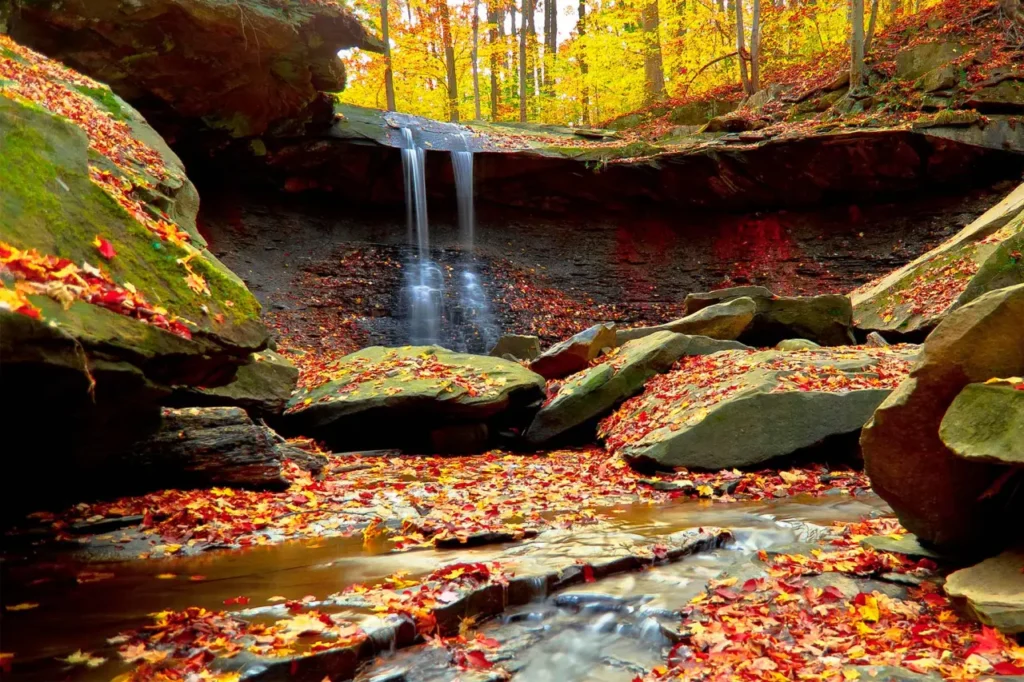
Let’s explore some interesting and beautiful places within the National Park System.
Delicate Arch
Delicate Arch – Arches National Park, Utah: Delicate Arch is an iconic natural arch that has become a symbol of Utah. The hike to the arch offers stunning views of the surrounding red rock landscapes.
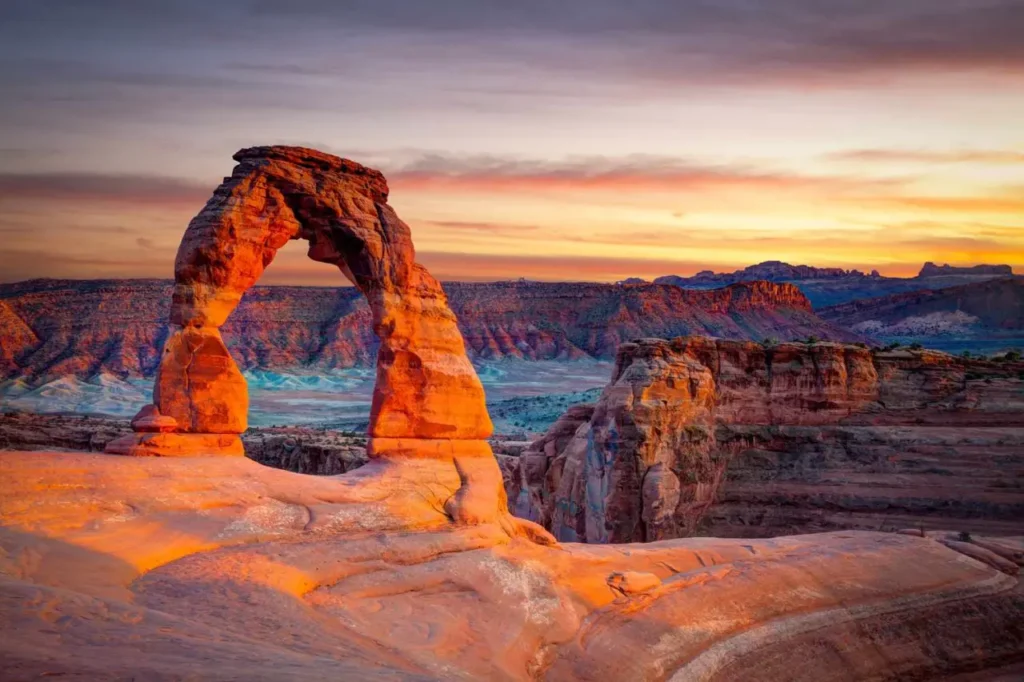
Yosemite Valley
Yosemite Valley – Yosemite National Park, California: Yosemite Valley is known for its towering granite cliffs, beautiful waterfalls (such as Yosemite Falls), and lush meadows. The valley offers breathtaking views from spots like Tunnel View and Glacier Point.
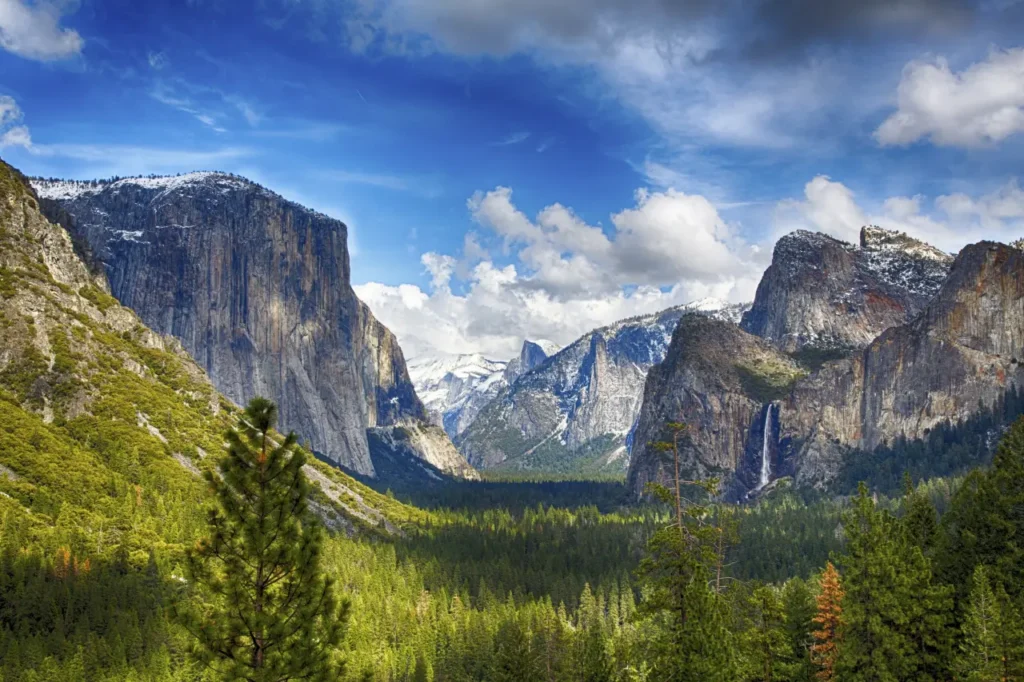
Bryce Canyon
Bryce Canyon Amphitheater – Bryce Canyon National Park, Utah: The Bryce Canyon Amphitheater is a unique geological formation filled with thousands of hoodoos, tall spires of rock. The vibrant colors and intricate formations create a surreal and awe-inspiring landscape.
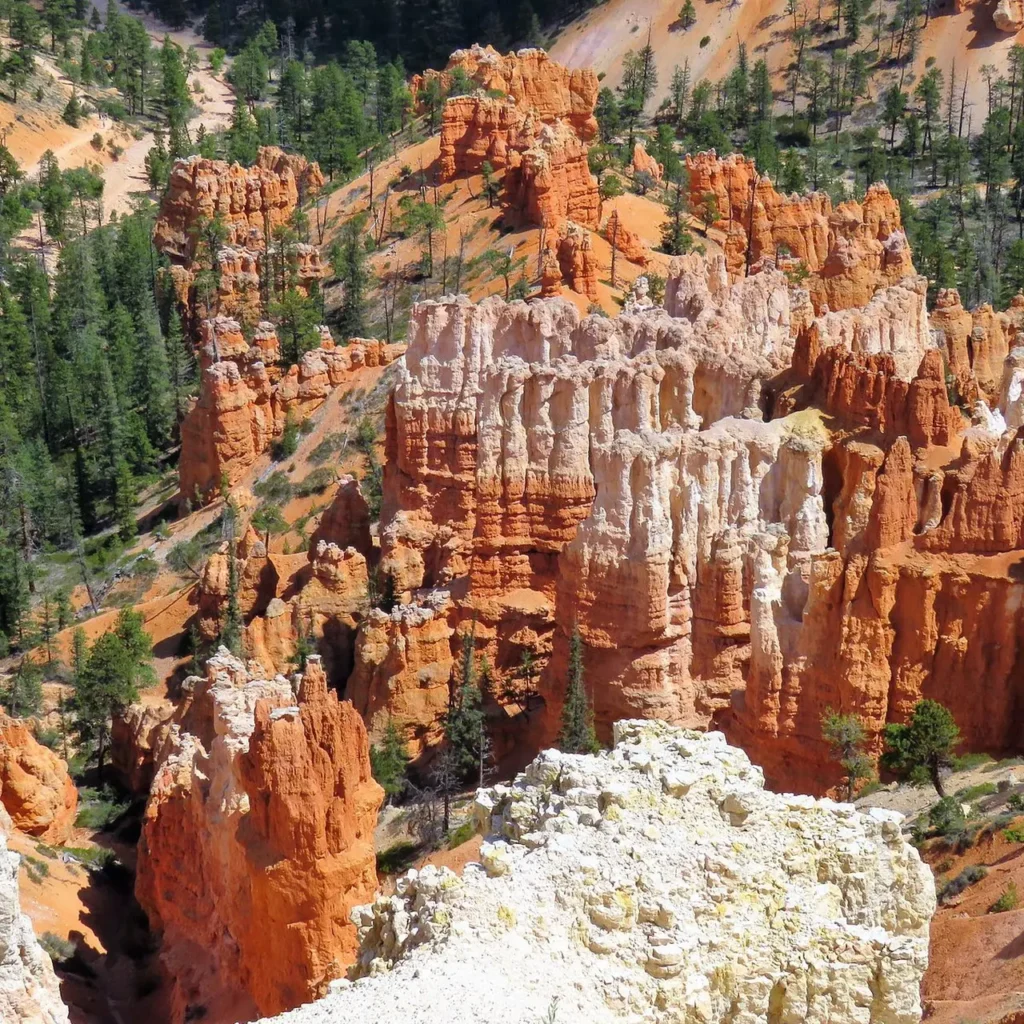
Glacier Point
Glacier Point – Glacier National Park, Montana: Glacier Point offers panoramic views of Glacier National Park’s dramatic mountain peaks, glacial valleys, and pristine lakes. It’s a popular spot to enjoy sunrise or sunset vistas.
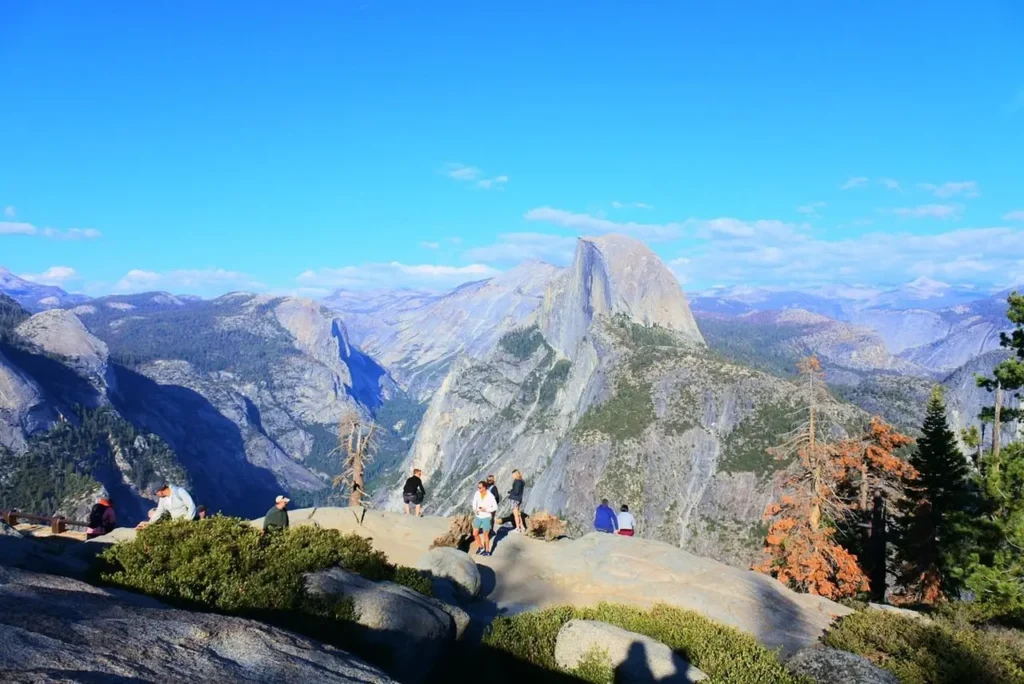
The Narrows
The Narrows – Zion National Park, Utah: The Narrows is a narrow gorge carved by the Virgin River, with towering cliffs on both sides. Hiking through the river is a thrilling and beautiful experience, with unique rock formations and stunning canyon scenery.
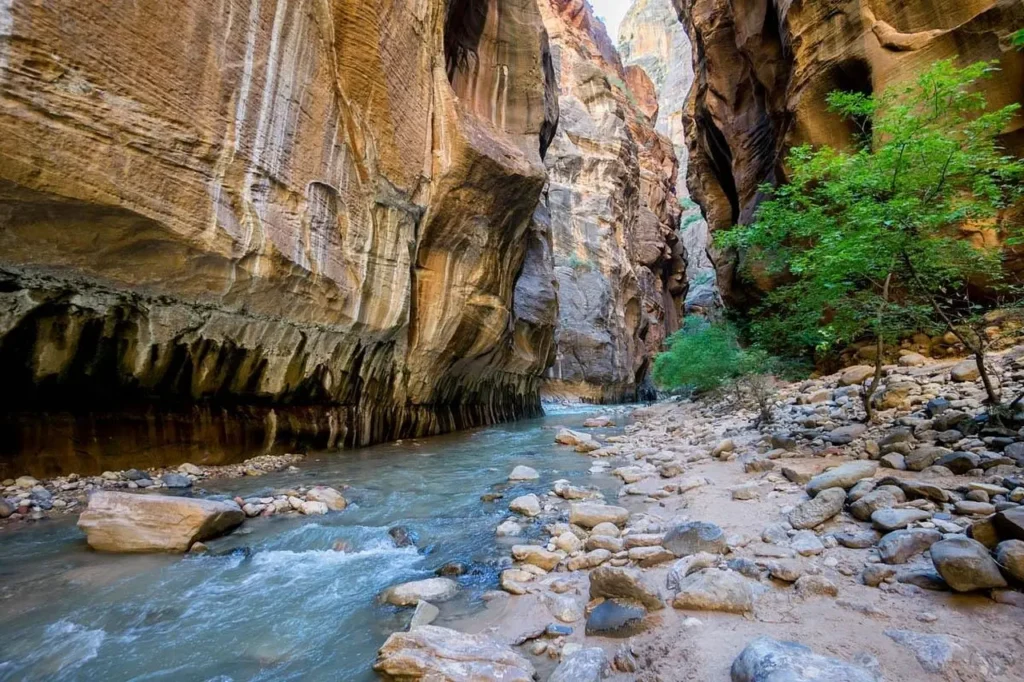
Grand Prismatic Spring
Grand Prismatic Spring – Yellowstone National Park, Wyoming: The Grand Prismatic Spring is one of Yellowstone’s most famous thermal features. Its vibrant colors, caused by heat-loving bacteria, create a mesmerizing sight that is best viewed from the park’s boardwalks.
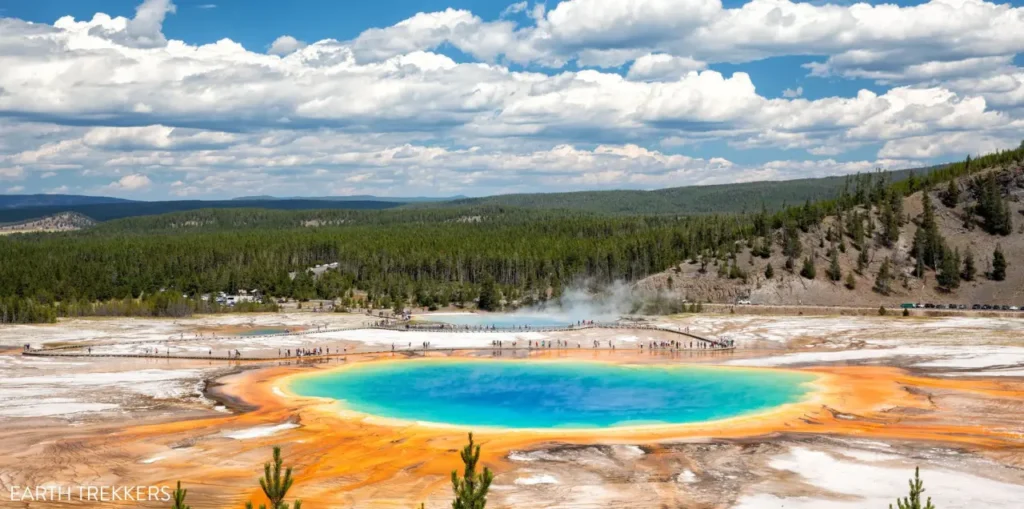
Cades Cove
Cades Cove – Great Smoky Mountains National Park, Tennessee/North Carolina: Cades Cove is a scenic valley surrounded by mountains, offering stunning views of rolling meadows, historic structures, and abundant wildlife. It’s a popular spot for scenic drives and wildlife viewing.
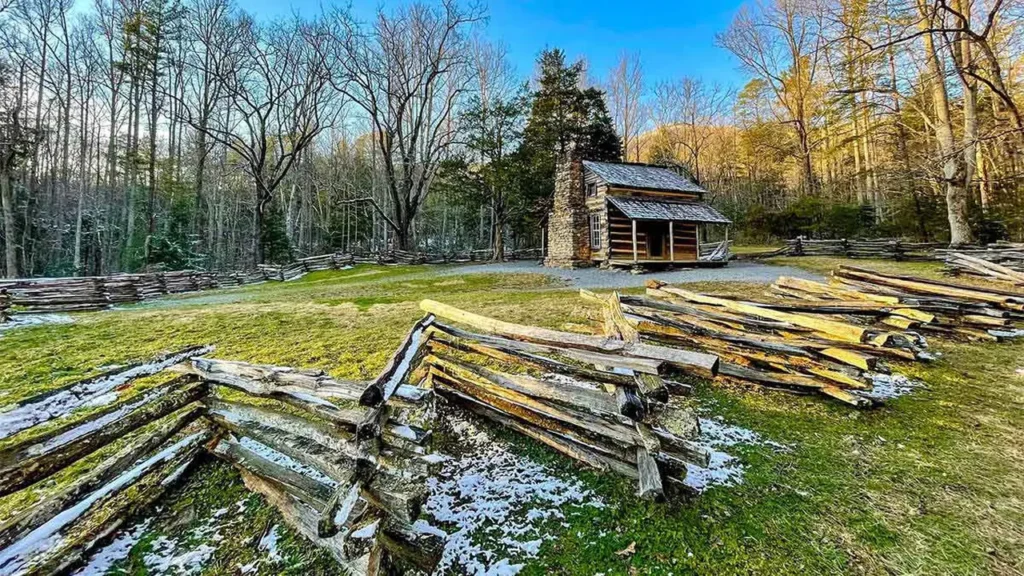
Maroon Bells
Maroon Bells – Maroon Bells-Snowmass Wilderness, Colorado: The Maroon Bells are two towering peaks surrounded by pristine alpine lakes and colorful aspen groves. The reflection of the peaks in Maroon Lake is particularly stunning, especially during the fall foliage season.
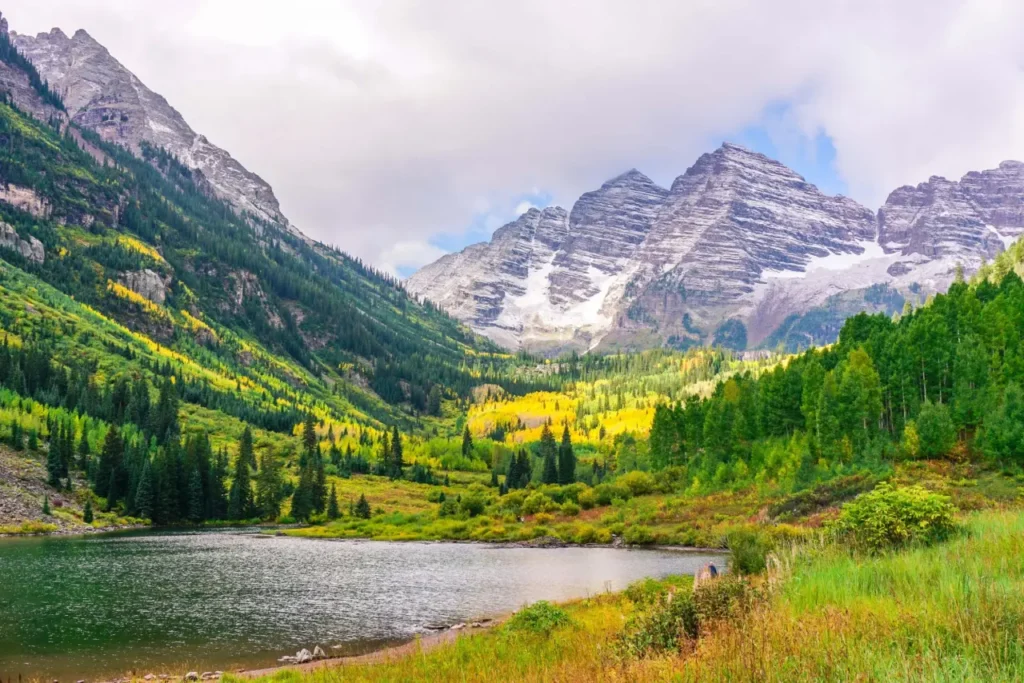
Haleakalā Summit
Haleakalā Summit – Haleakalā National Park, Hawaii: The Haleakalā Summit on the island of Maui offers breathtaking views of the volcanic landscape, with expansive vistas of the crater and the surrounding islands. It’s a popular spot for sunrise or stargazing.
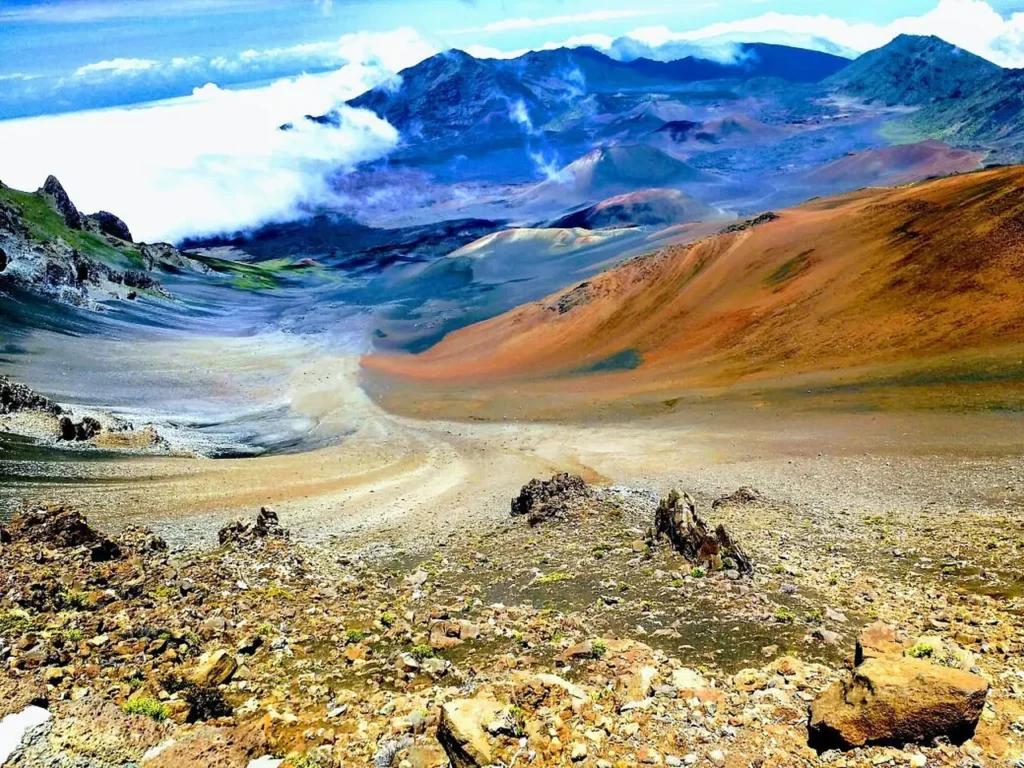
Acadia National Park
Acadia National Park, Maine: Acadia National Park offers a variety of beautiful vistas, from rocky coastlines to mountains. Places like Cadillac Mountain, Jordan Pond, and Thunder Hole offer stunning views of the Atlantic Ocean and the park’s rugged landscapes.
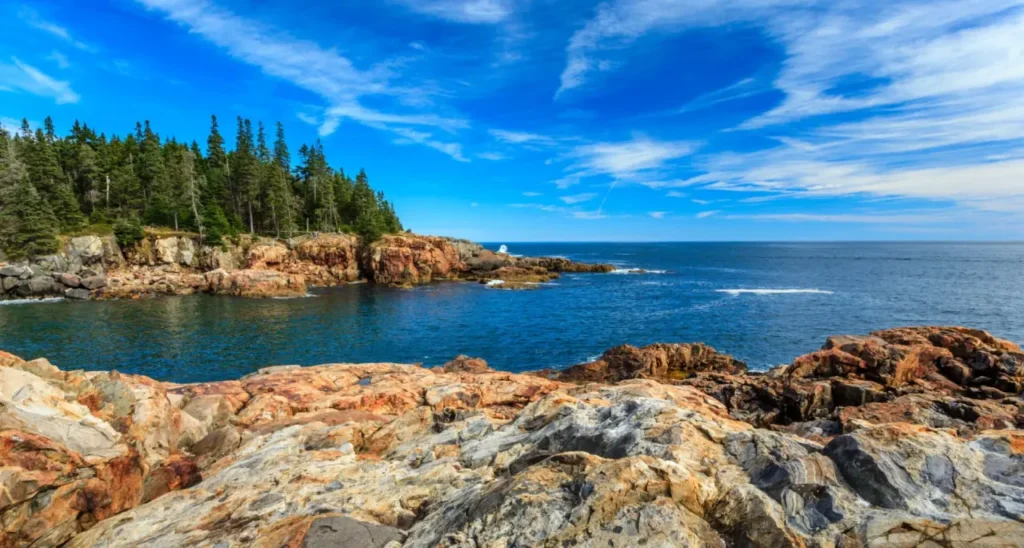
Horseshoe Bend
Horseshoe Bend – Glen Canyon National Recreation Area, Arizona: Horseshoe Bend is a striking meander of the Colorado River, known for its horseshoe-like shape. It offers a dramatic view of the river as it curves around the towering cliffs.
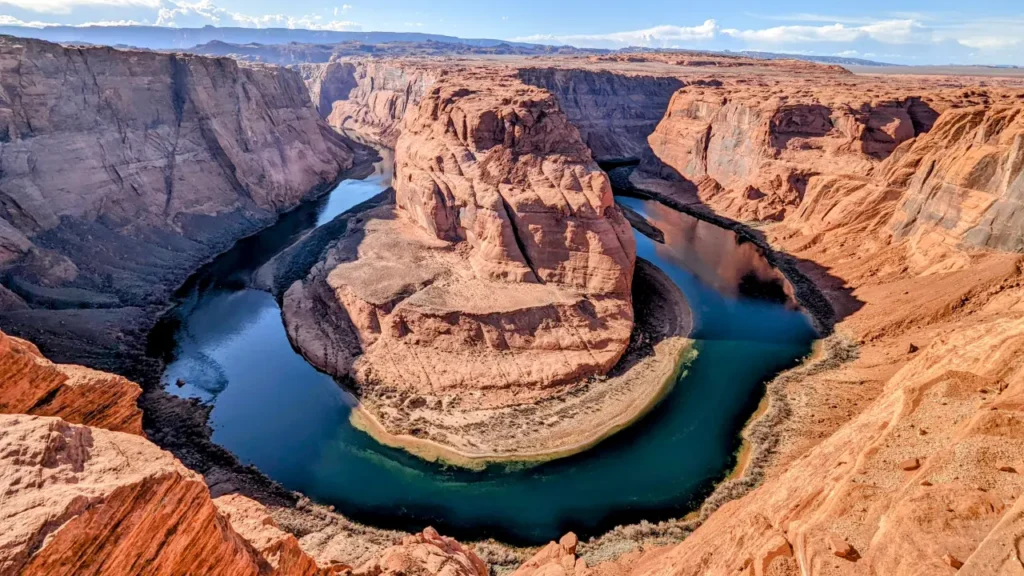
Rocky Mountain
Rocky Mountain National Park, Colorado: This park is known for its majestic mountain peaks, alpine meadows, and crystal-clear lakes. Trail Ridge Road offers stunning vistas of the surrounding landscapes, and hiking trails lead to beautiful destinations such as Dream Lake and Emerald Lake.
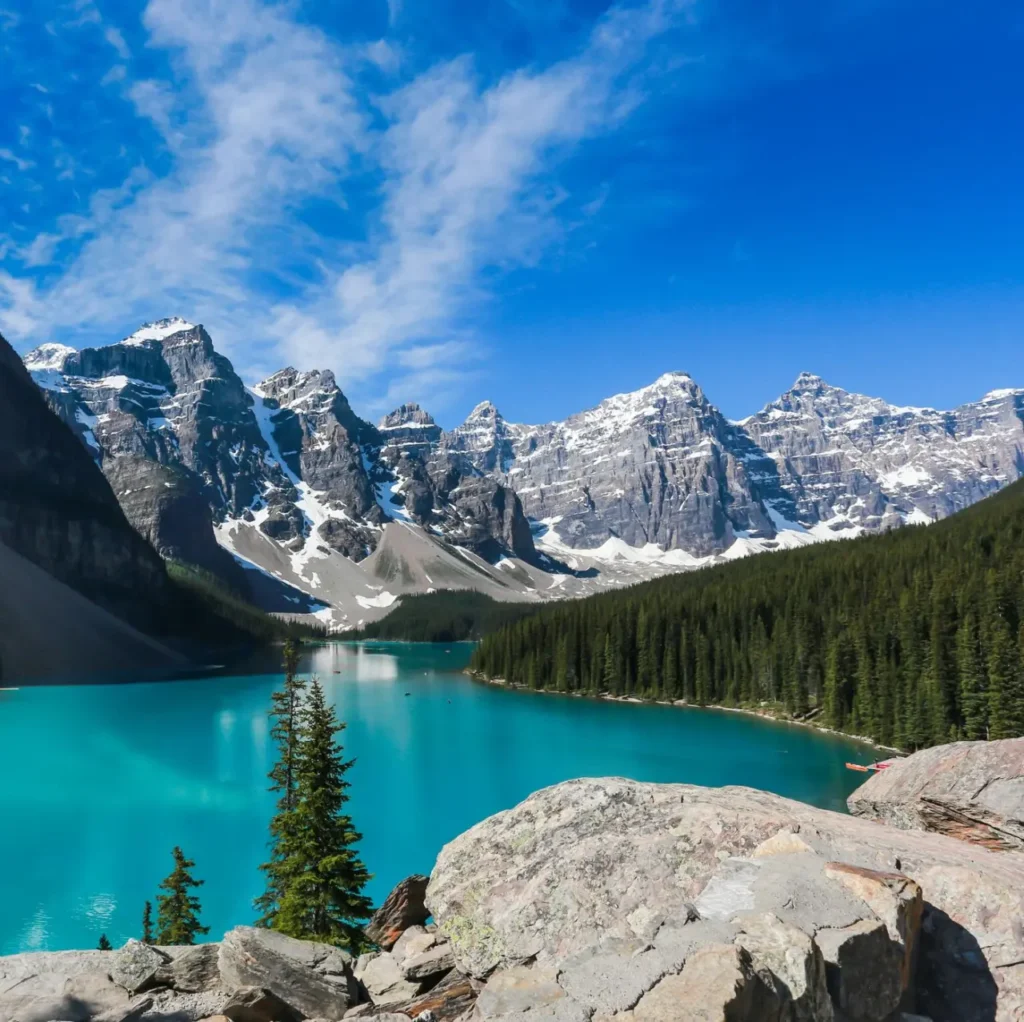
Zion Canyon
Zion Canyon – Zion National Park, Utah: Zion Canyon is a deep and narrow gorge carved by the Virgin River. The towering sandstone cliffs, hanging gardens, and vibrant colors make it a breathtaking destination. The Zion Canyon Scenic Drive offers stunning views along the way.
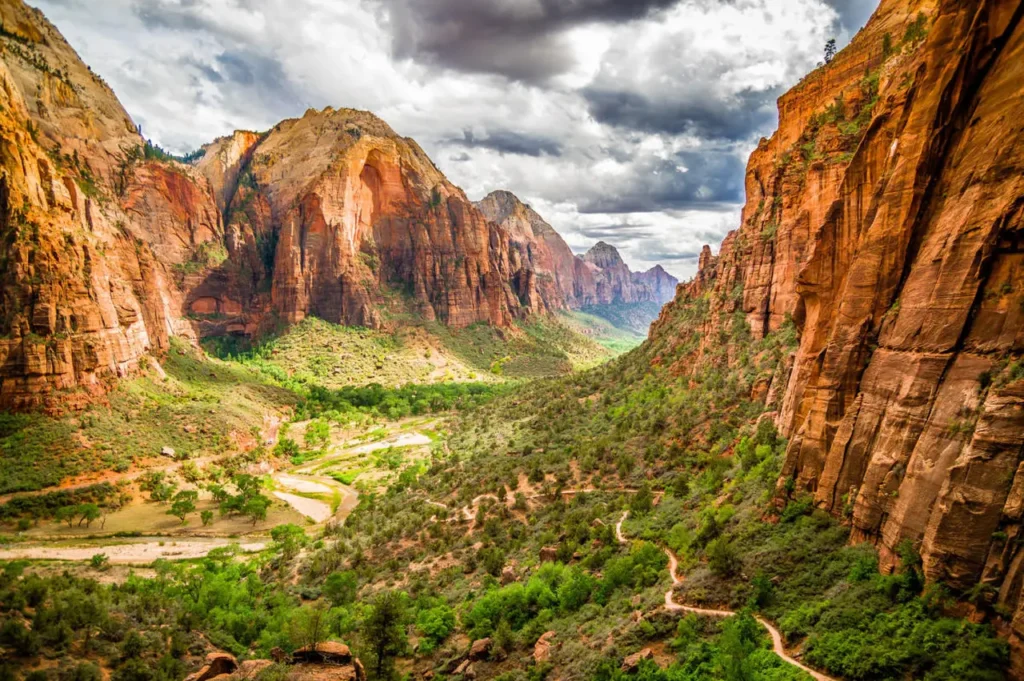
Kenai Fjords
Kenai Fjords National Park, Alaska: This park features stunning glaciers, fjords, and abundant wildlife. Take a boat tour to see glaciers calving into the ocean and spot marine mammals such as whales and sea lions.
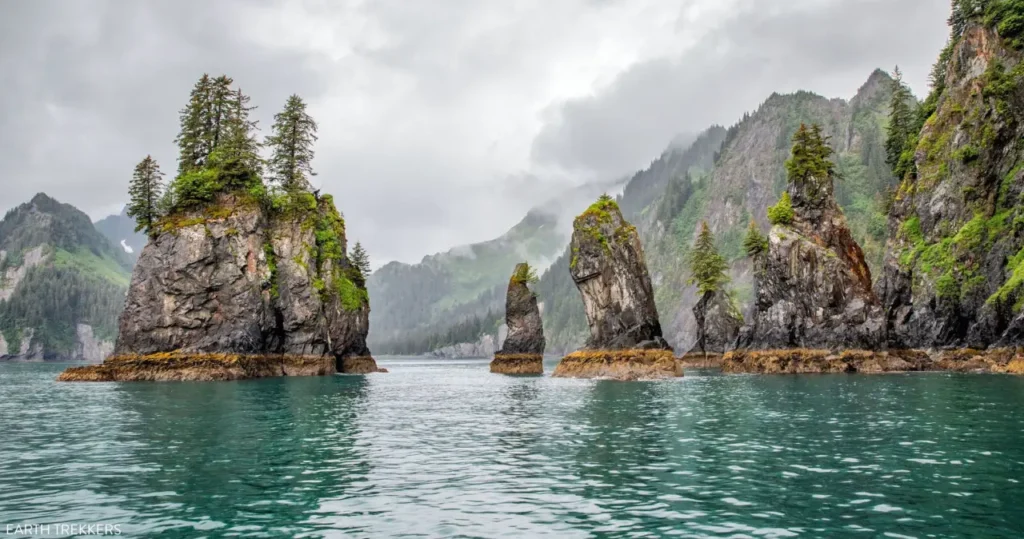
Great Sand Dunes
Great Sand Dunes National Park and Preserve, Colorado: This park is home to the tallest sand dunes in North America, set against a backdrop of rugged mountains. The unique combination of sand dunes, grasslands, and alpine peaks creates a surreal and beautiful landscape..
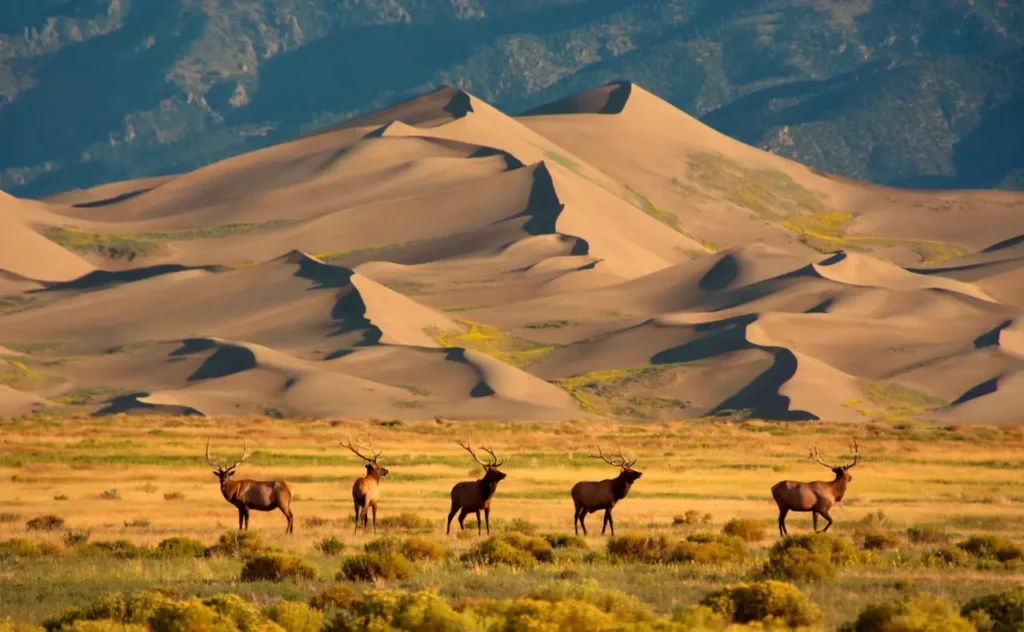
Crater Lake
Crater Lake National Park, Oregon: Crater Lake is a deep blue lake formed within the caldera of a collapsed volcano. The pristine waters and surrounding cliffs offer breathtaking views, and the Rim Drive provides access to numerous lookout points.
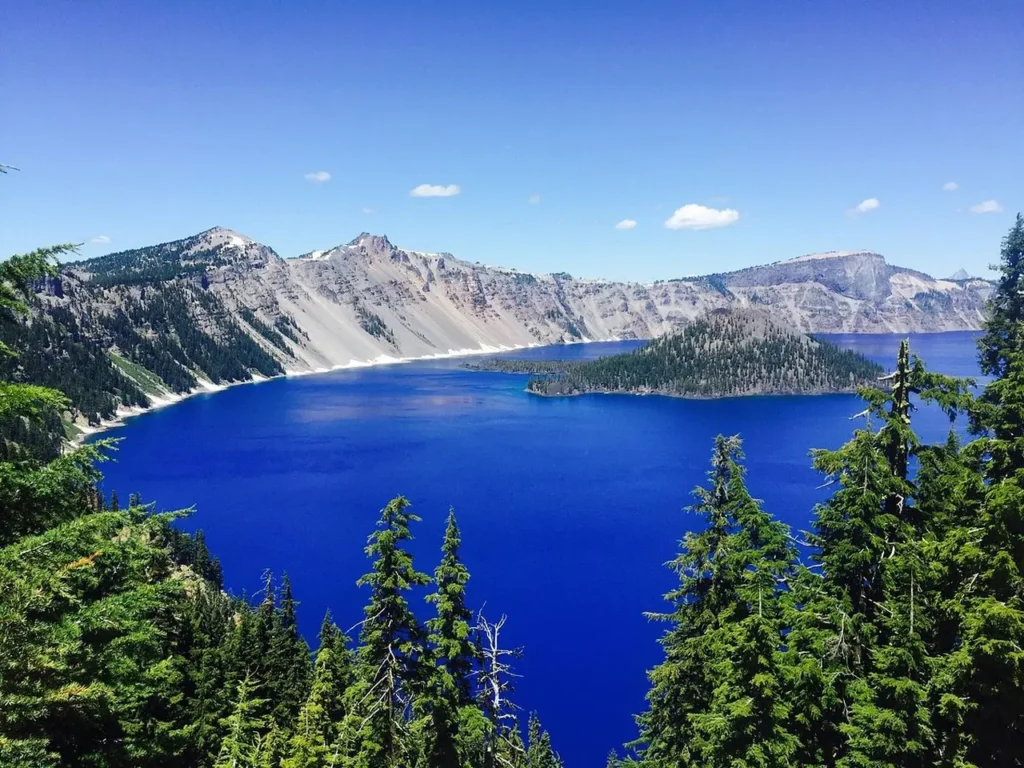
Olympic National Park
Olympic National Park, Washington: This park encompasses diverse ecosystems, including temperate rainforests, rugged coastlines, and glaciated mountains. Explore the Hoh Rainforest, visit the stunning beaches along the coast, or hike through the alpine meadows of Hurricane Ridge.
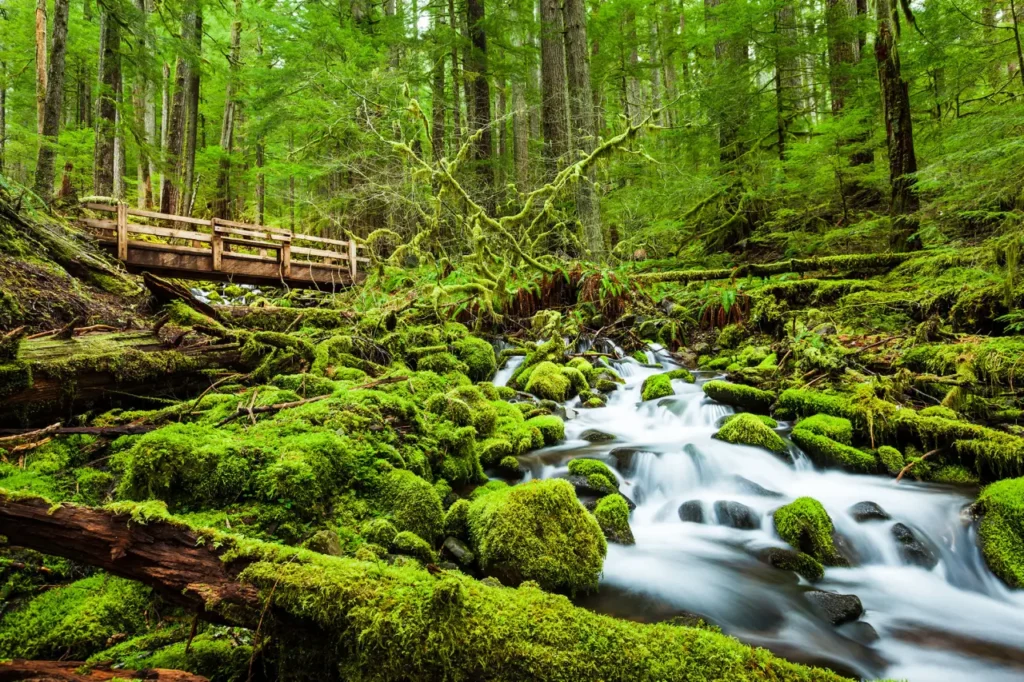
Joshua Tree
Joshua Tree National Park, California: Known for its unique Joshua Trees and striking desert landscapes, this park offers opportunities for stargazing, rock climbing, and hiking. Key viewpoints include Keys View, which provides panoramic vistas of the Coachella Valley.
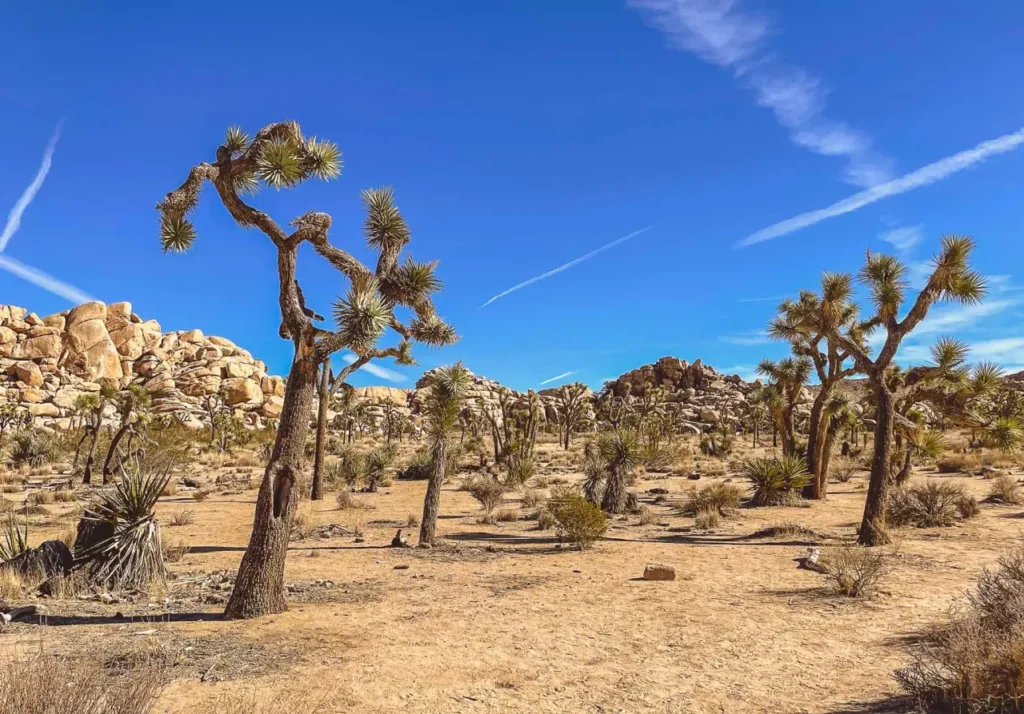
Denali National Park
Denali National Park and Preserve, Alaska: Home to North America’s highest peak, Denali (formerly Mount McKinley), this park offers vast wilderness, stunning mountain ranges, and abundant wildlife. Take a bus tour along Denali Park Road for spectacular views and wildlife sightings.
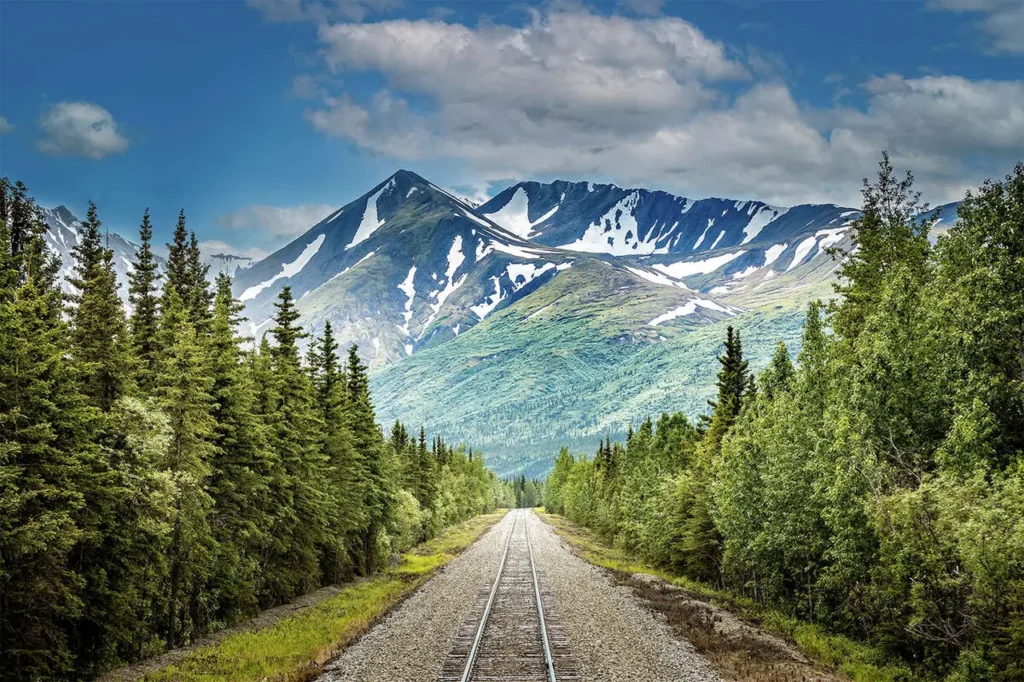
Everglades National Park
Everglades National Park, Florida: Explore the unique and diverse ecosystem of the Everglades, including expansive sawgrass marshes, mangrove forests, and diverse wildlife. Take a boat tour through the mangroves or hike the Anhinga Trail for a chance to spot alligators, birds, and other wildlife.
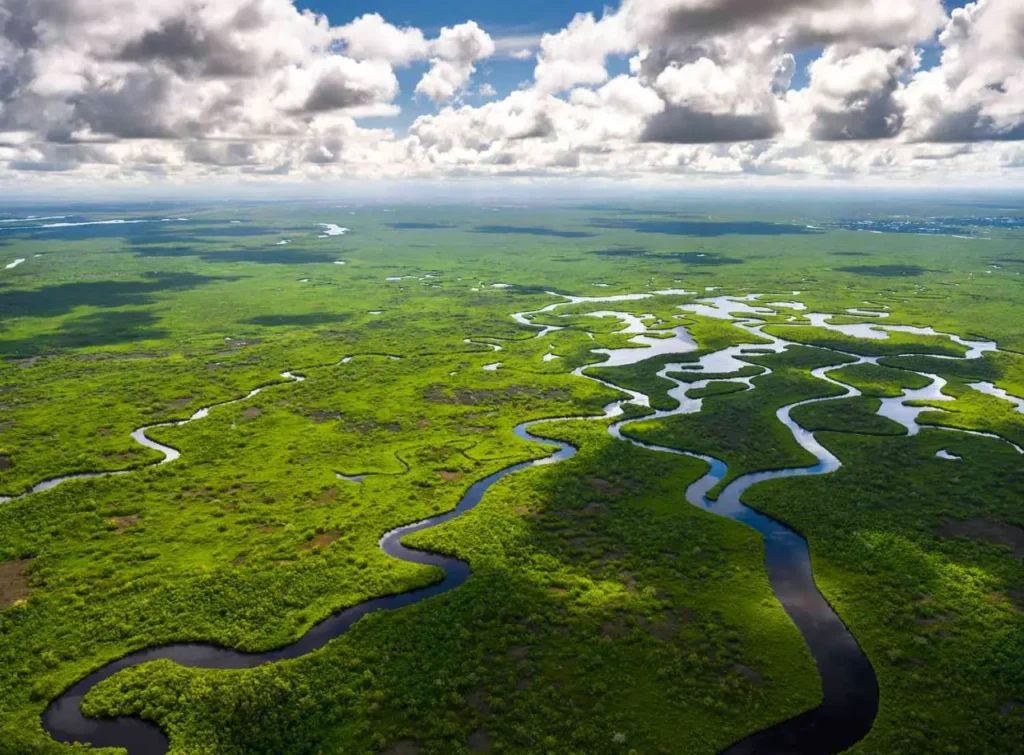
Carlsbad Caverns
Carlsbad Caverns National Park, New Mexico: Descend into the underground world of Carlsbad Caverns, where a network of caverns and chambers showcases stunning stalactite and stalagmite formations. The Big Room, the largest chamber in the caverns, offers a mesmerizing subterranean experience.
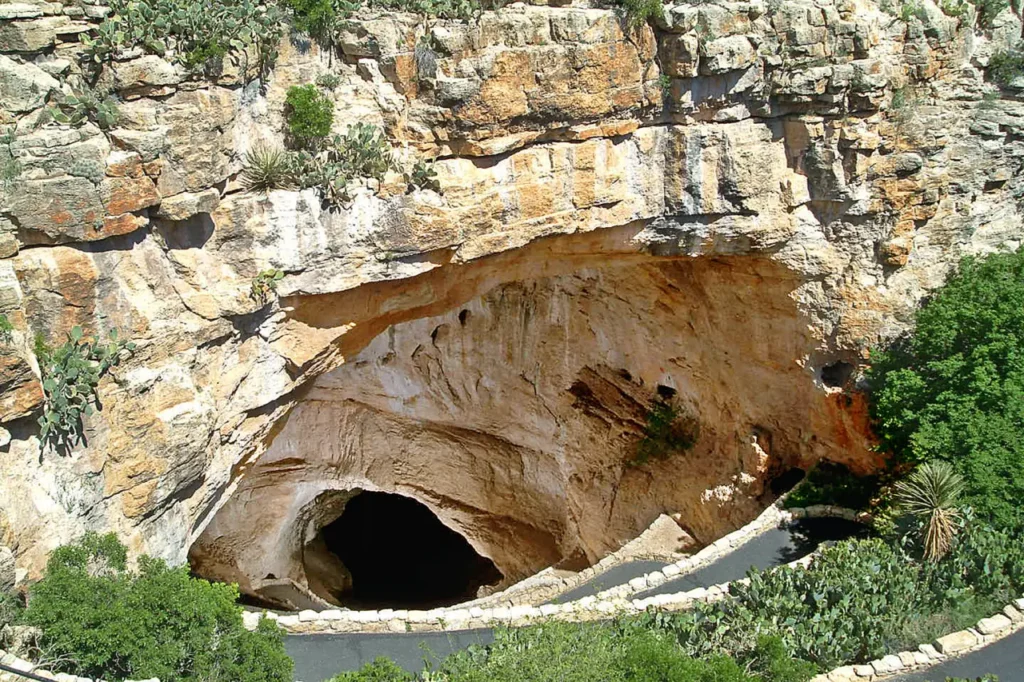
Redwood National
Redwood National and State Parks, California: Marvel at the towering ancient coast redwoods, the tallest trees on Earth. These majestic trees create a serene and otherworldly atmosphere in the dense forests, where hiking trails and scenic drives allow for an up-close experience.
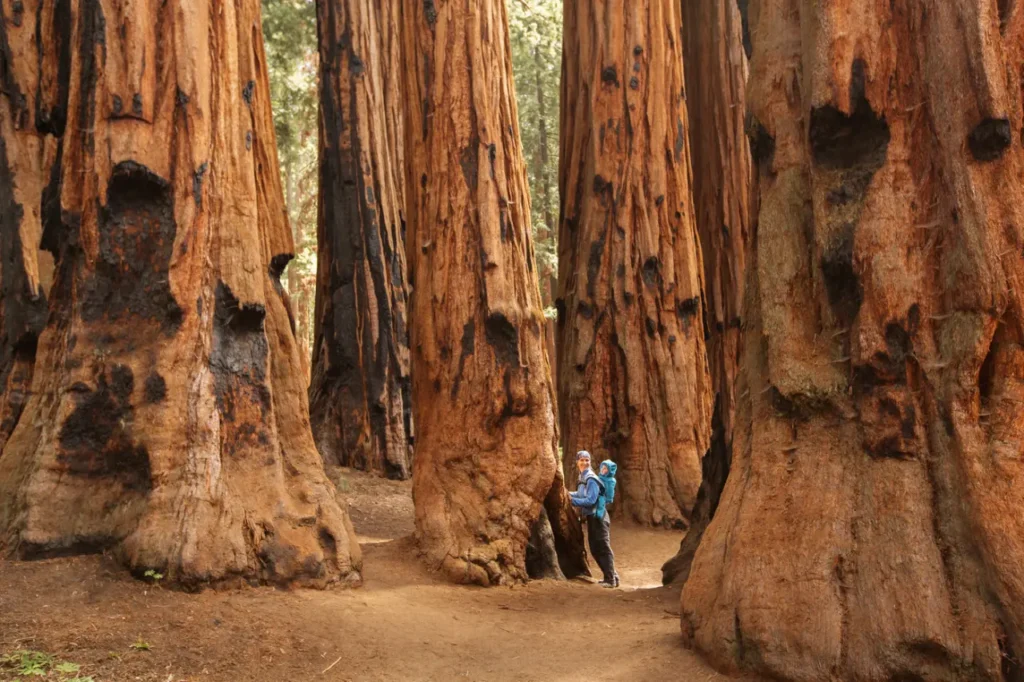
Great Smoky Mountains
Great Smoky Mountains National Park, Tennessee/North Carolina: Explore the picturesque landscapes of the Great Smoky Mountains, known for its misty mountains, cascading waterfalls, and diverse wildlife. Cades Cove, Roaring Fork, and Clingmans Dome are popular areas to explore.
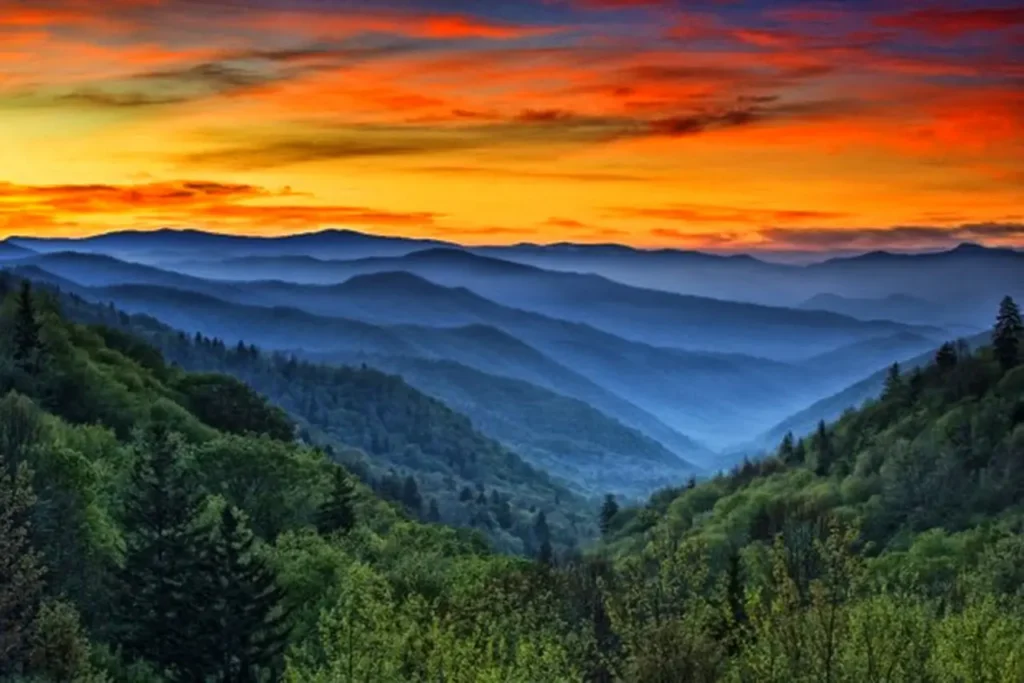
Hawai’i Volcanoes
Hawai’i Volcanoes National Park, Hawaii: Witness the awe-inspiring power of volcanic activity at this park, home to active volcanoes, lava fields, and unique geological features. The park offers hiking trails, scenic drives, and the opportunity to see lava flowing into the ocean.
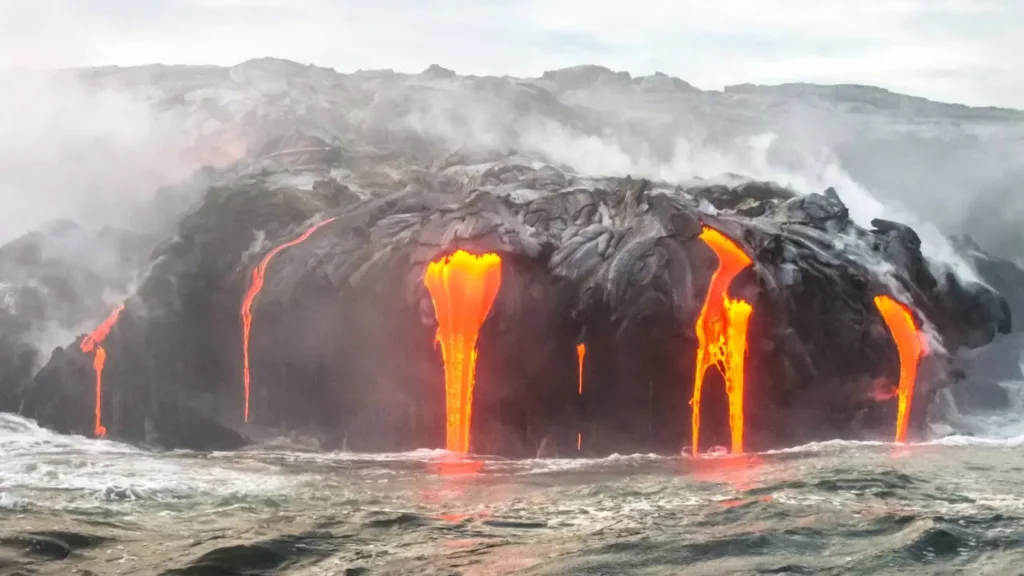
Saguaro
Saguaro National Park, Arizona: Experience the unique beauty of the Sonoran Desert, where towering saguaro cacti dominate the landscape. The park provides opportunities for hiking, scenic drives, and stunning sunsets against the backdrop of the iconic cacti.
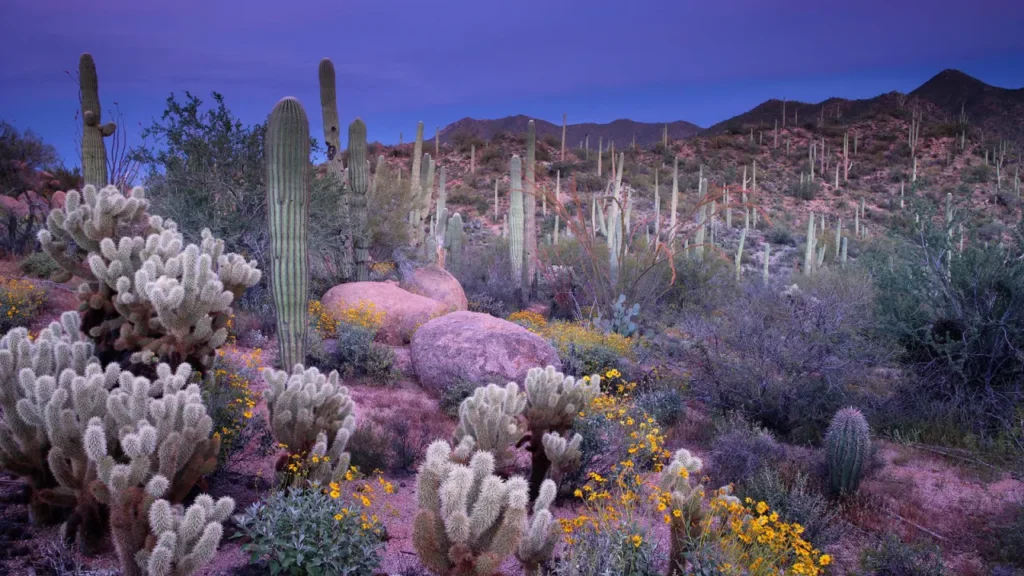
Shenandoah
Shenandoah National Park, Virginia: Discover the beauty of the Blue Ridge Mountains in Shenandoah National Park. The park offers scenic drives along the Skyline Drive, hiking trails with panoramic views, and the chance to witness stunning fall foliage.
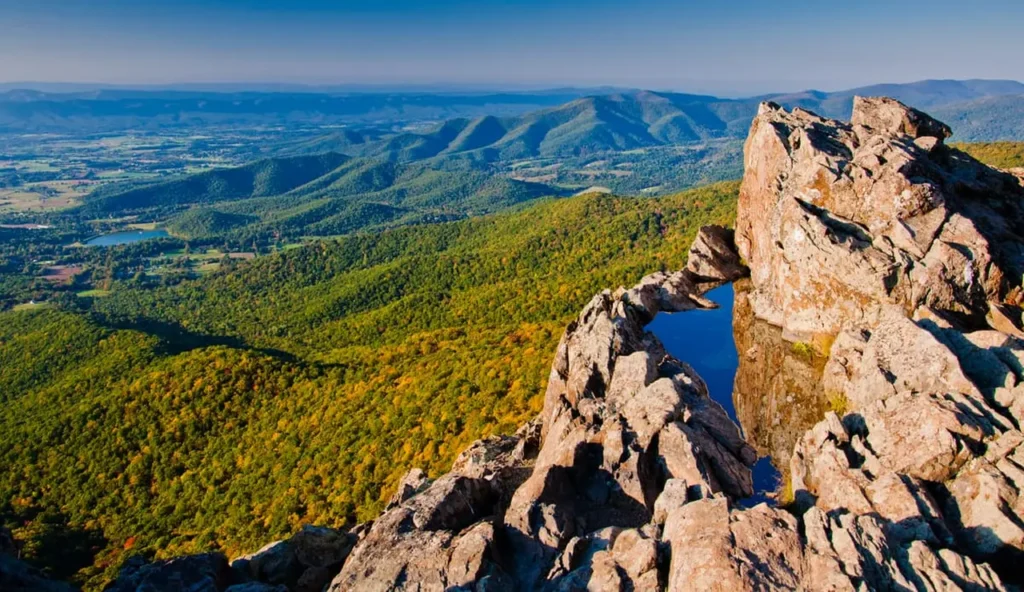
Grand Teton
Grand Teton National Park, Wyoming: This park is known for its majestic mountain range, pristine lakes, and abundant wildlife. The iconic Teton Range provides a stunning backdrop for activities like hiking, boating on Jenny Lake, and wildlife watching.
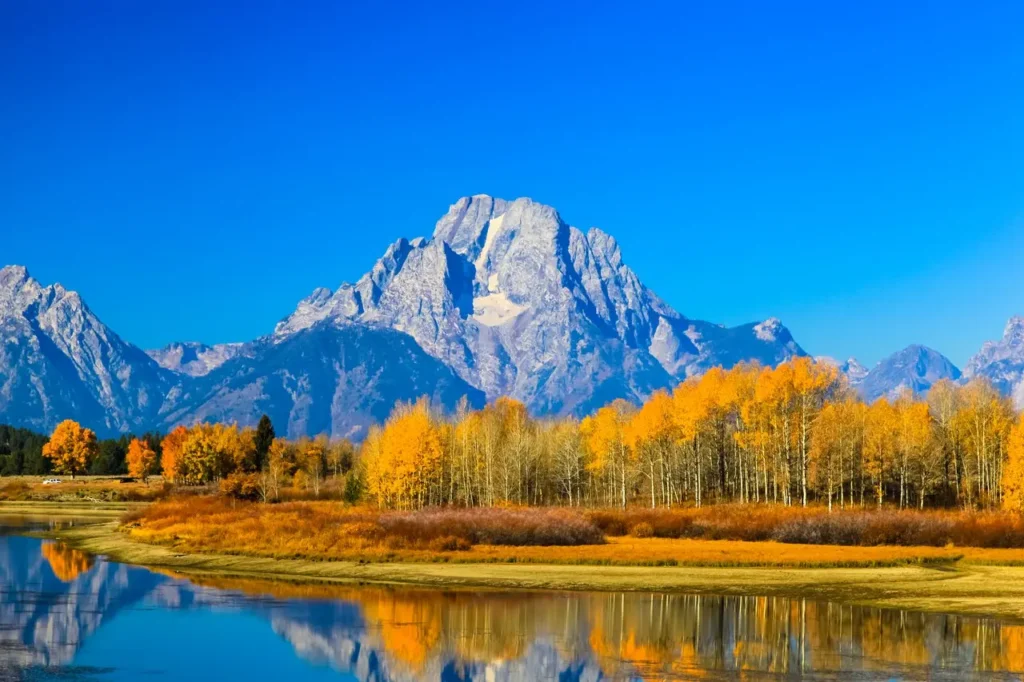
Canyonlands
Canyonlands National Park, Utah: Discover the expansive canyons, mesas, and buttes carved by the Colorado and Green Rivers. The park offers various districts, including Island in the Sky, Needles, and The Maze, each with its own unique landscapes and recreational opportunities.
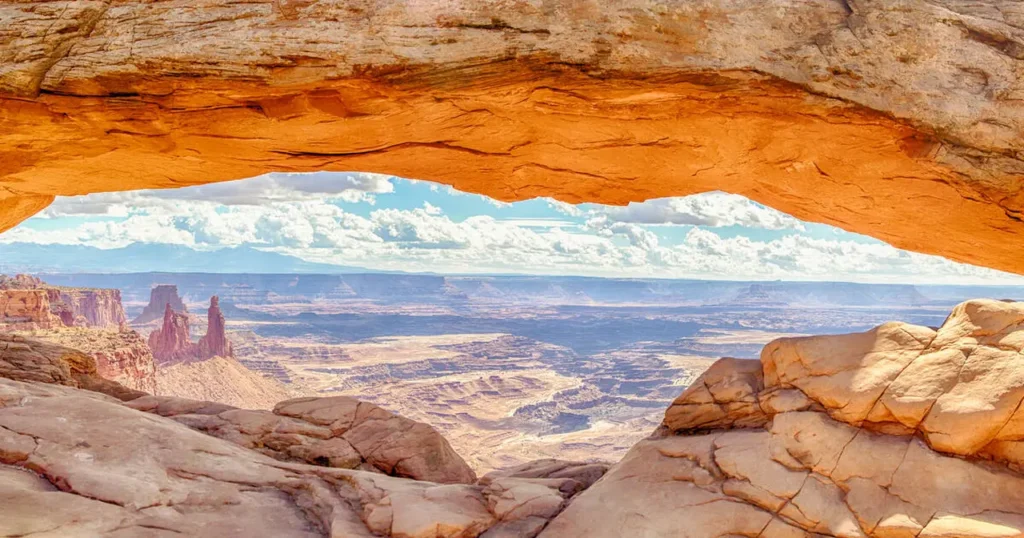
Glacier Bay
Glacier Bay National Park and Preserve, Alaska: Cruise through the icy waters of Glacier Bay to witness towering glaciers, calving icebergs, and stunning fjords. The park is also a haven for marine wildlife, including humpback whales, seals, and sea lions.
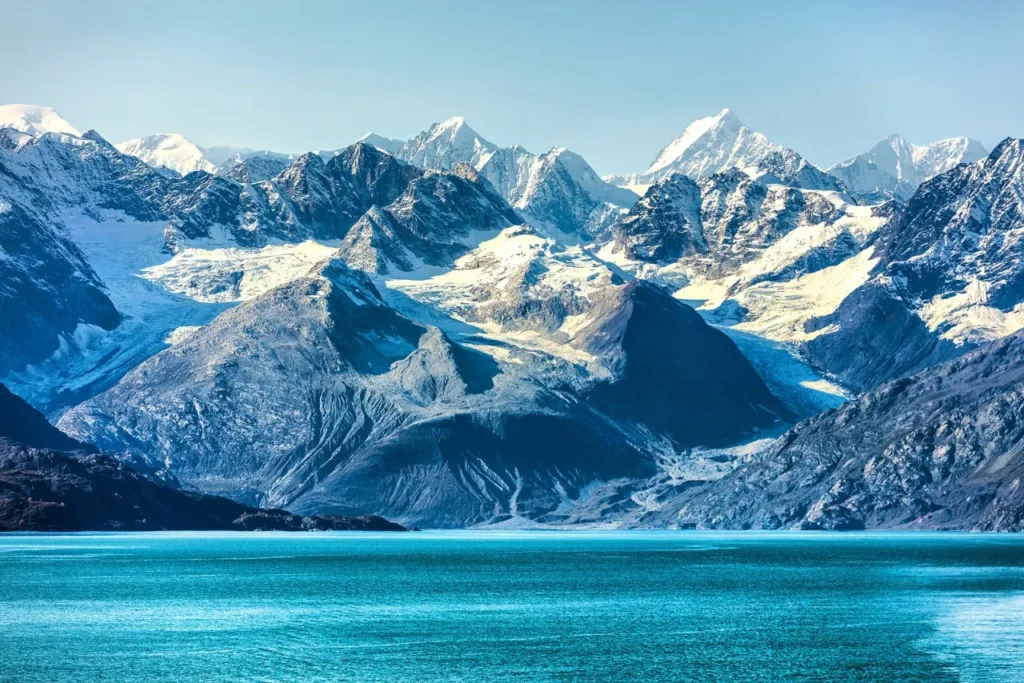
Death Valley
Death Valley National Park, California/Nevada: Discover the unique and diverse landscapes of Death Valley, including expansive salt flats, colorful badlands, towering sand dunes, and rugged mountains. The park is known for its extreme heat and breathtaking desert scenery.
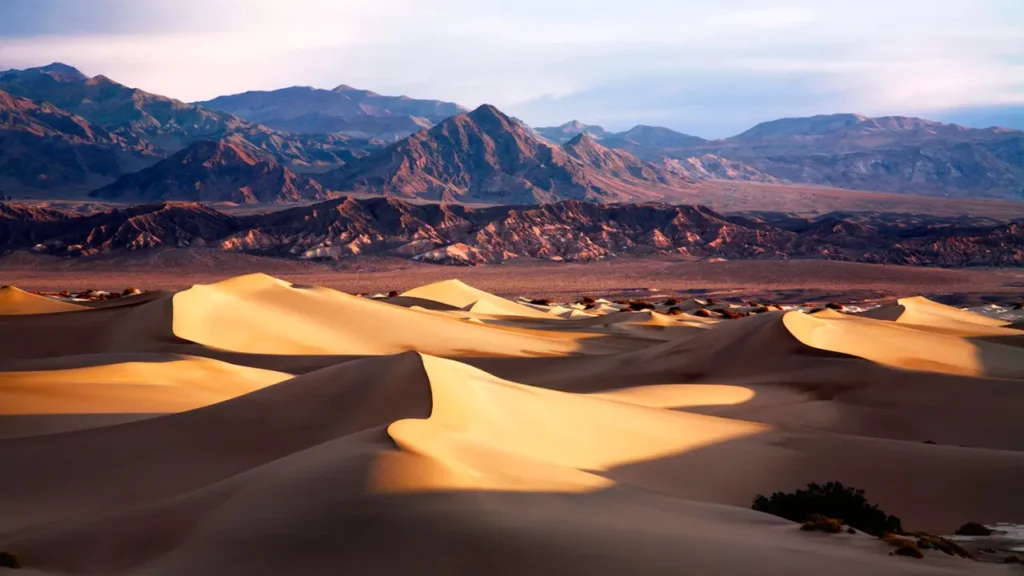
These are just some of the many incredible places within the National Park System. Each park has its own distinct beauty and attractions, providing endless opportunities for exploration and appreciation of nature’s wonders.
These are the facts we have gathered and compiled about the National Park System in the US. We hope that this article has provided useful information for readers. We look forward to seeing you in upcoming articles!
